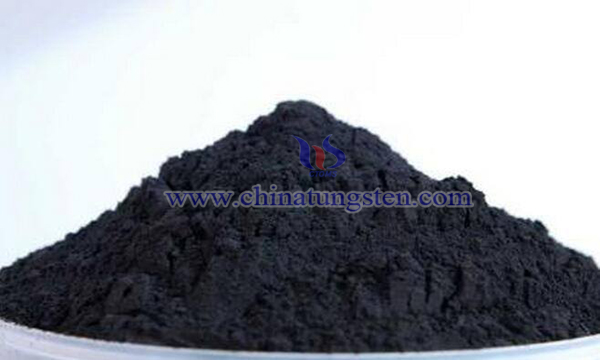Low Temperature Synthesis of Tungsten Disulfide Nanorods
- Details
- Category: Tungsten Information
- Published on Tuesday, 30 April 2019 11:23
Nanostructured materials have unique physical, chemical, electrical, magnetic and mechanical properties and have potential applications in filling materials, drug delivery, catalysis and other fields. Previous studies have shown that transition metal disulfides have unique properties and can be used as photosensitive materials, catalysts, lubricants, cathode materials for high-energy batteries, etc.

Tungsten disulfide (WS2) has a layered structure similar to graphite sheet. It has a strong covalent bond in the layer and a weak van der Waals force between the layers. The layers and layers are easily peeled off with good anisotropy and low friction coefficient. Tungsten disulfide has been widely used in industrial production due to its unique physical and chemical properties, such as solid lubricants, desulfurization catalysts for petrochemical production, elastic coating materials, hydrogen storage materials, lithium storage electrode materials, catalytic hydrogenation and so on.
Up to now, the main methods used to prepare nano-tungsten disulfide are high temperature thermal reaction (gas-solid reaction, solid-state sintering, etc.) and low temperature solvothermal synthesis (hydrothermal method, solution chemical reaction, etc.). Tungsten disulfide nanotubes, nanosheets and nanoflowers have been prepared by high temperature thermal reaction.
However, the cost of technology is high and the process is complex. The cost of low temperature synthesis is low and the morphology is relatively controllable, but the related research is less.
In view of this, some scientists have proposed a preparation method of tungsten disulfide nanorods. The products are tungsten nanorods with good visible light absorption properties. The preparation process includes:
(1)Sodium tungstate, hydroxylamine hydrochloride and thiourea were dissolved in water at a molar ratio of 1:1.5 to 3:3 to 5, and the solution was stirred to form a transparent solution. The pH value of the solution was adjusted to 5-6 by acid.
(2)Mixed surfactants are added to the solution obtained in step (1) and stirred to dissolve; the mixed surfactants are composed of CTAB, CTAC and F127 in a molar ratio of 1:1.5-3:0.6-1.8, and the molar ratio of the mixed surfactants to sodium tungstate is 1:5-10;
(3)The solution obtained in step (2) was transferred into stainless steel reactor and sealed, and reacted for 10-24 hours at 170-200 ℃.
(4)Tungsten disulfide nanorods were prepared by cooling the reaction products obtained in step (3) to room temperature, separating, washing and drying the reaction products.
The tungsten disulfide nanorods were prepared by hydrothermal reaction of sodium tungstate, hydroxylamine hydrochloride and thiourea with a special mixed surfactant consisting of CTAB (hexadecyltrimethylammonium bromide), CTAC (hexadecyltrimethylammonium chloride) and F127 (amphoteric triblock polymer formed by ethoxy-propoxy group). The diameter of the prepared tungsten disulfide nanorods was 20-100 nm and the length was 2. 00-350 nm, the maximum length difference is less than 150 nm, the length distribution is concentrated, the size uniformity is good, and the dispersion is good. It has excellent visible light absorption performance. It will have broad application prospects in photocatalysis and hydrogen evolution.
- Tungsten Oxide Manufacturer & Supplier, Chinatungsten Online: www.tungsten-oxide.com
- Tungsten News & Prices of China Tungsten Industry Association: www.ctia.com.cn
- Molybdenum News & Price: news.molybdenum.com.cn
- Tel.: 86 592 5129696; Fax: 86 592 5129797; Email: sales@chinatungsten.com



 sales@chinatungsten.com
sales@chinatungsten.com